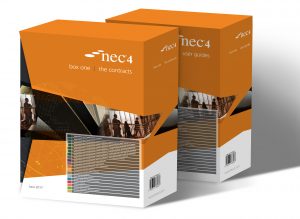
NEC4 contracts: user group seminar report
I was kindly invited by the NEC to its Users’ Group Annual Seminar on 22 June 2017, at which the new NEC4 suite of standard form construction contracts was launched. In this report I highlight some of the key information points from the seminar, in particular in relation to the new Alliance Contract (ALC), the new Design, Build and Operate Contract (DBO) and the changes made to the Engineering and Construction Contract (ECC).
For a full list of what’s in the NEC4 suite, see News Analysis: NEC4 contracts published.
Introductory remarks
The seminar was opened by the President of the Institution of Civil Engineers (ICE), Tim Broyd. According to Broyd, ICE’s vision is for the NEC contracts to be the ‘world’s favourite procurement suite in the foreseeable future’, and NEC4 had been ‘improved and streamlined’ in light of feedback, consultations and developments.
The NEC3 contracts had been recommended for use on government contracts by the (then) Office of Government Commerce (OGC). David Hancock, Construction Director of the Infrastructure and Projects Authority (the OGC’s successor), confirmed that this recommendation has been extended to NEC4. In particular, Hancock thought that the NEC4’s aim of contract standardisation (ie reducing the need for amendments) encouraged efficiency, and that its clarity enabled suppliers to appreciate what was required of them—both aspects were consistent with the Government Construction Strategy. He also welcomed the introduction of the DBO, as the government was looking to move towards whole life delivery systems.
Alliance Contract
The ALC is a multi-party contract, entered into by the ‘Client’ (this term is now used throughout the NEC4 suite instead of ‘Employer’) and multiple ‘Partners’ (ie contractors). The Client and Partners together make up the ‘Alliance’, which is managed by an ‘Alliance Board’ (which makes decisions unanimously) and an ‘Alliance Manager’ (which carries out a project manager-style role).
The project is delivered by the Alliance acting together as an integrated team, sharing risk and reward:
- work is allocated on a ‘best for project’ basis, ie it is carried out by the people/organisations best able to do it
- payment is made on a cost reimbursable basis (ie ‘Defined Cost’ plus ‘Fee’). This is similar to Option E of the ECC
- there are also incentives, shared by the Partners, for achievement of ‘Alliance Objectives’ set by the Client and for coming under budget
- liabilities are shared jointly by the Alliance (except where there is wilful default or a third party claim)
- joint names insurance is provided by the Client, including professional indemnity insurance (but each Alliance member is still required to take out its own employer’s liability insurance)
- there is a single ‘Contract Data’, created by mutual agreement
Given the effort involved in setting up the ALC, the NEC suggested that it was most appropriate for major projects/ programmes of work.
The ALC does not expressly provide for disputes to be resolved by adjudication, court or arbitration proceedings, but rather states that they are to be finally resolved by the Alliance Board. However, and as acknowledged at the seminar, the Housing Grants, Construction and Regeneration Act 1996 (HGCRA 1996) will imply a right to refer a dispute arising under a construction contract to adjudication where none is expressly provided (see Practice Note: Construction contracts under the HGCRA 1996).
A consultative copy will be available for download from the NEC4 website from 28 June 2017 (following a webinar about the ALC), and the NEC is aiming to formally publish the ALC in January 2018.
Design, Build and Operate Contract
The DBO is a two-party contract between a Client and Contractor, under which the Contractor designs the asset and operates it for a period of years. It retains the structure and standard provisions of the EEC. The DBO is driven by the Client’s operational requirements, with the NEC framing it as essentially a contract for an operational service. The construction work can be specified by the Client, or left to the Contractor to propose.
The NEC described the DBO as a ‘complex contract’, suitable where significant construction work is needed. It is flexible in that, as well as being suitable for a project to construct and then operate an asset, it could be used on a project to take over an existing asset, operate and improve (or even replace) it.
A performance table sets out targets for performance against operational requirements, as well as a reduction in payment if targets are not met or additional payment if they are exceeded. Unlike EEC there are no payment Options, but rather payment is split into parts A (which allows for construction as a series of lump sums, and service as periodic payments) and B (which allows for target share arrangements from the performance table).
Unlike the ALC, the DBO was not initially published in consultative form and is available for use now.
Changes to the NEC4 Engineering and Construction Contract
John Hughes D’Aeth of Berwin Leighton Paisner (and an NEC4 Contract Board member) went through what he considered to be the main changes to the EEC:
Design responsibility
Option X15.1 of the NEC3 EEC provided that:
The Contractor is not liable for Defects in the works due to his design so far as he proves that he used reasonable skill and care to ensure that his design complied with the Works Information
Therefore, the onus was on the Contractor to prove that it had used reasonable skill and care in carrying out its design. In Option X15.1 of NEC4 the burden has now been switched on to the Client to prove that the Contractor did not use reasonable skill and care (which is consistent with the position in the JCT contracts):
The Contractor is not liable for a Defect which arose from its design unless it failed to carry out that design using the skill and care normally used by professionals designing works similar to the works.
The description of the standard of care has also changed in NEC4 to align with the industry standard.
Costs finality
For the first time, NEC4 now includes a final account-style process (called the ‘final assessment’ (clause 53)) to capture and close out costs within a fixed timescale following completion of the works. The final assessment is carried out by the Project Manager, but if it fails to do so the Contractor may carry out it instead. The final assessment is conclusive unless referred to dispute resolution within a fixed period.
There is also a new process for the finalisation of ‘Defined Costs’ in the costs-based contracts (ie Options C to F).
Third party interests
It is now possible to require the Contractor to give collateral warranties (called ‘undertakings‘ in NEC4) to the Client and third parties (Option X8, which had previously existed in the NEC3 Professional Services Contract (PSC) but not the NEC3 ECC). No model form of undertaking is provided.
Option Y(UK)3 has been substantially amended to reflect how the Contracts (Rights of Third Parties) Act 1999 works.
It is now possible to assign the benefit of the contract (clause 28)—unless the assignee doesn’t intend to act in a spirt of mutual trust and cooperation.
Liabilities and insurance
Section 8 has been significantly revised to meet insurers’ concerns, removing ‘Risk’ and ‘Indemnity’ concepts and setting out the Contractor’s liability in detail rather than doing so by exception.
A waiver of subrogation rights against the parties had also been introduced. This was described as being important in light of the Supreme Court’s decision in Gard Marine v China National Chartering [2017] UKSC 35 (see News Analysis: Clarifying the abnormal occurrence test (Gard Marine and Energy Ltd v China National Chartering Co Ltd)).
Dispute resolution
The contract now provides for disputes to be referred to senior representatives. This is mandatory under Option W1 (which is for use where HGCRA 1996 does not apply), but not under Option W2 (which is for use where HGCRA 1996 applies).
A new Option W3 provides for disputes to be resolved with the help of a ‘Dispute Avoidance Board’. This can only be used where HGCRA 1996 does not apply.
Other key changes
The well-known clause 10.1 has been split into clauses 10.1 (which requires the parties, Project Manager and Supervisor to act as specified in the contract) and 10.2 (which requires them to do so ‘in a spirit of mutual trust and cooperation’).
Anti-corruption provisions have been added (clauses 18 and 91.8).
There is a new quality management regime (clause 40), which had been included in the NEC3 PSC.
In relation to proposed instructions, there is now a detailed quotation process (clause 65).
The parent company guarantee (Option X4), now called the ‘ultimate holding company guarantee’, contains more detailed provisions which allow for the guarantee to be given by an intermediate company.
There is now provision for a retention bond to be provided, instead of having a cash retention (Option X16.3).
Innovation
Matthew Garratt of Costain (and an NEC4 Contract Board member) highlighted specifically some of the new features of NEC4 which encouraged new solutions to be proposed by the supply chain, many of which are optional:
Contractor’s proposals
NEC4 now includes value engineering-type mechanisms, under which the Contractor can propose:
- changes to the scope to reduce the costs of the works (clause 16)
- changes to the scope to reduce the whole life cost of the asset (Option X21)
- acceleration measures (clause 36)
In each case, the benefits are shared by the parties.
Early contractor involvement
Provisions for early contractor involvement (ECI) are set out in Option X22. ECI enables the Client to appoint the Contractor at an early stage to participate in the development of designs and proposals, when it is easier for improvements and innovations to be introduced.
Design and build contracting
There is a new secondary option to better address the situation where the Contractor is to design the works, addressing matters such as professional indemnity insurance and retention of documents and design information (Option X15).
Building information modelling
Option X10 provides additional clauses to support the use of building information modelling, and deals with ownership and liability. In NEC4 the term ‘information modelling’ is used.
Dispute Avoidance Board
As noted above, a new Dispute Avoidance Board (Option W3) helps parties to resolves their disputes. It is nominated at the time the contract is entered into, and becomes familiar with the project. When a dispute arises, it provides a non-binding recommendation as to how it can be resolved.
Early adopters
Prior to 22 June 2017, pre-publication copies of NEC4 had been provided to selected organisations to review and adopt in their tender documents for projects due to start Q3 or Q4 2017. Early adopters of NEC4 include:
- AWE
- Parliamentary Estates (who intend to use it on the project to refurbish the Houses of Parliament)
- Severn Trent Water
- the Defence Infrastructure Organisation
Find out more
LexisPSL Construction customers are able to access further information and resources in the NEC contracts subtopic. Click here for a free trial.
Source: LexisNexis Purpose Built
NEC4 contracts: user group seminar report




